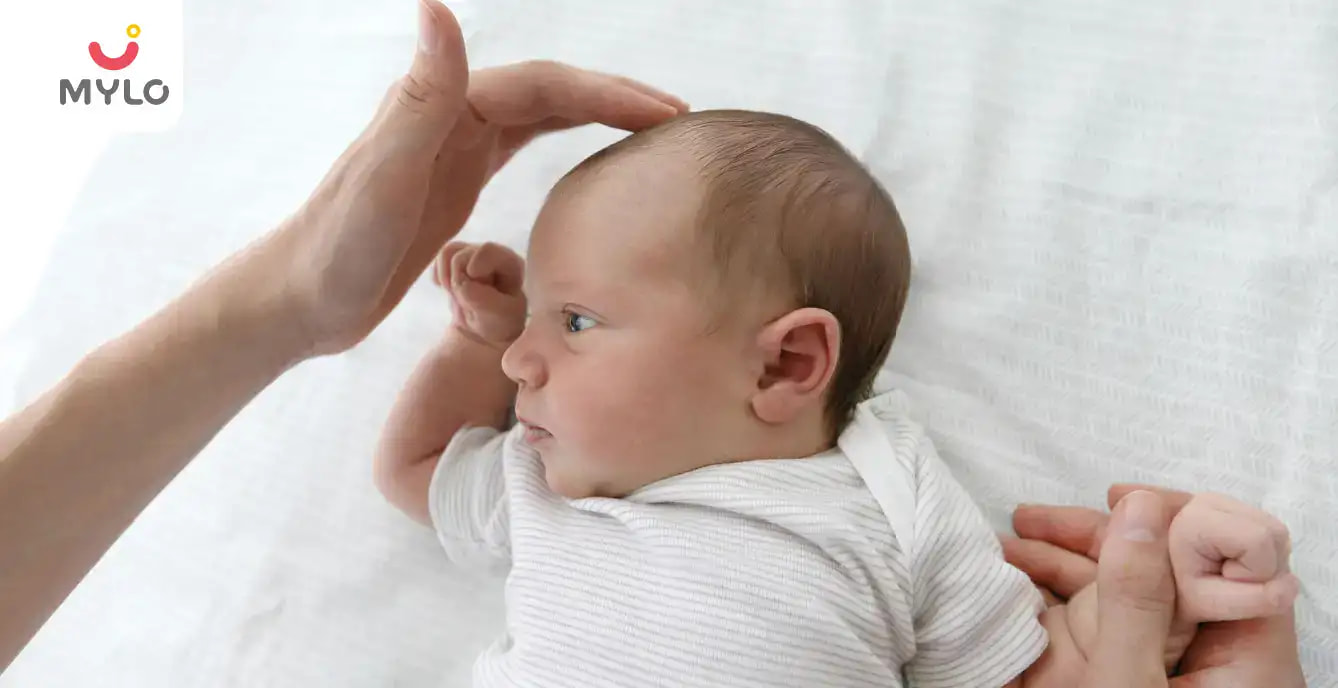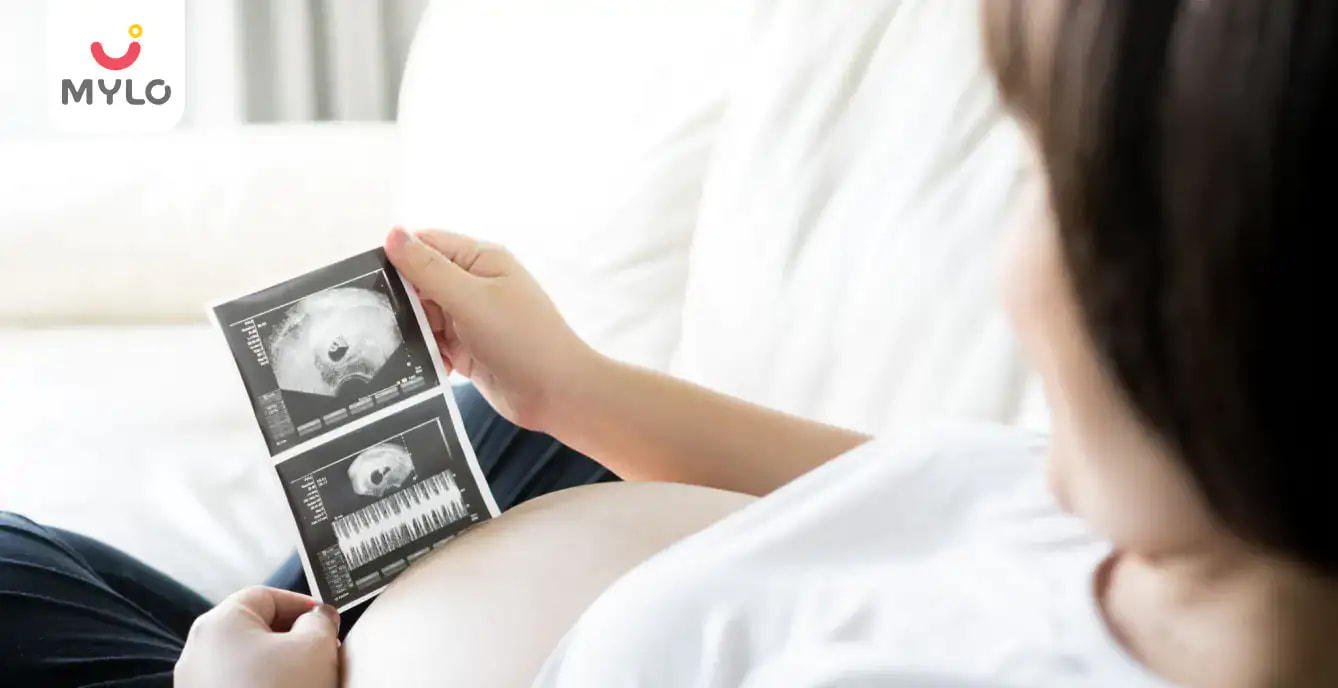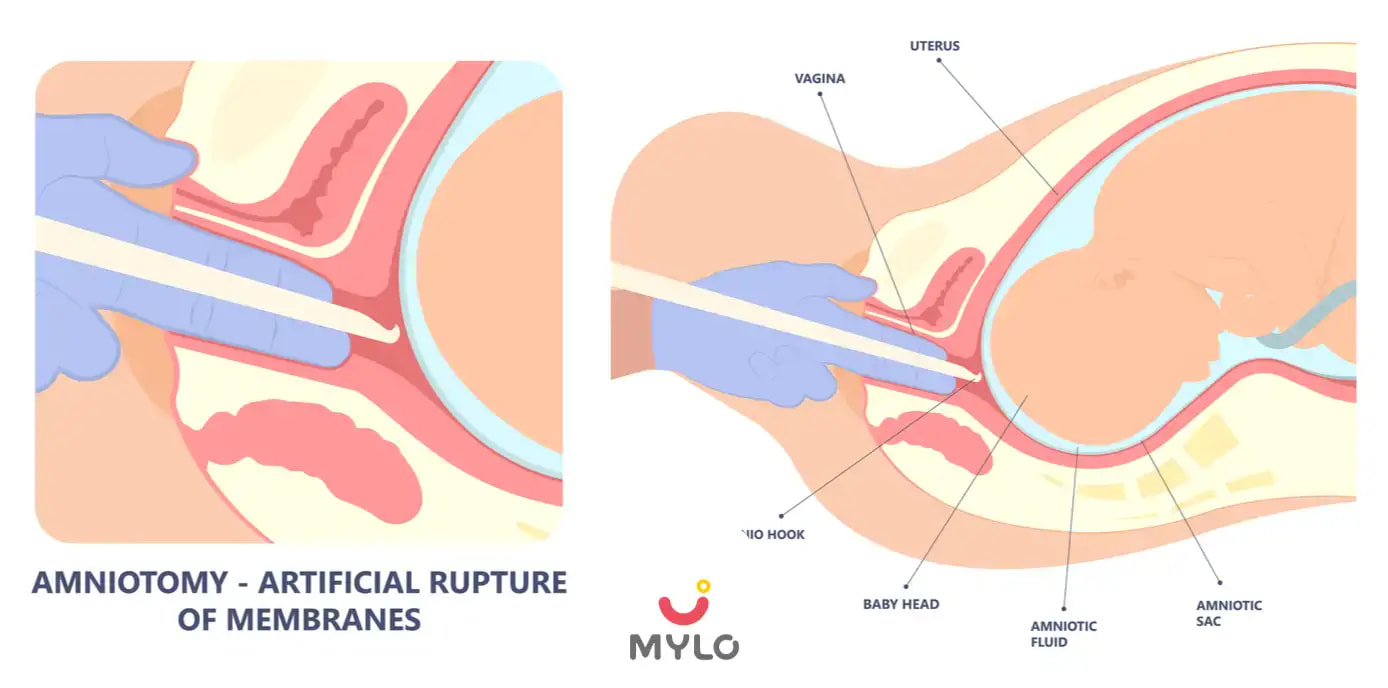Home

Caput Succedaneum: Causes, Risks & Treatment
In this Article

Baby Care
Caput Succedaneum: Causes, Risks & Treatment
Updated on 3 November 2023
Caput succedaneum is a soft boggy swelling on the head of infants. It is seen on the head as soon as the infant is born. if there are no associated complications, it should get resolved within 48 hours. Evaluation and assessment by the paediatrician are vital immediately after birth. most common causes are forceps delivery, prolonged second-stage labour and aggressive pushing during labour.
An ultrasound during and after delivery notably shows if there are any signs of swelling on the head of the baby. During the second phase of labour, uterine contractions tend to exert a lot of pressure on the fetal head. This causes fluid to settle on the top of the head. On ultrasound, caput succedaneum has been identified as early as 31 weeks. An ultrasound will be able to confirm an unnatural boggy swelling on the head.
Caput Succedaneum Definition
Shortly after birth, if swelling crosses the head's soft palate at the midline; it is called caput succedaneum. The swelling pertains to birth trauma or a strain during delivery. If an infant has been delivered normally and through the head position, there are chances that they might have caput succedaneum. Young mothers can notice a soft fluid-filled lump on the baby's head.
It is important for not only clinicians but also parents, to be vigilant and to be made aware of the condition. A thorough inspection and assessment of the infant are most important to identify, no other tests are necessary.
What causes caput succedaneum?
The causes of Caput Succedaneum are often birth trauma related to the head during normal vaginal delivery. It is more commonly associated with the prolonged second stage of labour hours and sustained pressure of pushing during labour. Vacuum-assisted deliveries and forceps deliveries are other causes of caput succedaneum.
The fluid collection related to caput succedaneum is present around the mid-line sutures. the suture lines are collagen sites and have space for fluid accumulation. The fluid in caput succedaneum is often fluctuating which often differentiates from the other blood-filled pathologies of the sutures.
The location of the fluid depends on the site of the trauma. it can be either on the top of the head or on both sides of the head.
Symptoms of caput succedaneum
The symptoms of Caput succedaneum show as early as during the first stage of labour where the contractions of labour have started and are at the peak. The paediatrician should be able to identify whether the fluid swelling is passing over the midline or not.
When touched, the swelling should be felt as boggy, soft to the touch and movable fluid.
bruising, redness with swelling can be inspected. this swelling can be identified either only on the top or on both sides of the scalp.
Essentially mothers will give a history of the prolonged second stage of labour, forceps delivery, vacuum delivery, vaginal delivery with head first position, decreased amniotic fluid in the uterus during the last stages of pregnancy and premature rupture of membranes.
Treatment for caput succedaneum
The treatment of caput succedaneum is supposedly to wait and watch. As the majority of cases resolve on their own within 24-48 hours. The key is to monitor and keep checking if the fluid is resolving. If the fluid does not resolve, a clinician should be consulted immediately.
Risks of caput succedaneum
Caput succedaneum is usually harmless yet the risks associated with caput succedaneum are:
-
Scarring- as after fluid builds up, the skin is overstretched and once it resolves there can bruising and scarring.
-
Jaundice - Children should be monitored for jaundice, a condition known as hyper-bilirubinemia. Bilirubin is re-absorbed back into the systemic circulation once the fluid is resolved.
-
Halo scalp ring alopecia- Alopecia is an absence of hair on the head in a particular area. fluid retention on the midline, just on the vertex can be associated with halo baldness.
-
early breaking of membranes: one of the risks associated with the development of caput succedaneum is the early breaking of water, as water breaks the baby loses its cushioning and this might be an added risk for the baby.
What are the long-term possibilities?
If the caput succedaneum does not resolve on its own, one should consult further. Long-term possibilities of caput succedaneum are baldness, jaundice, scarring and infection.
What if a baby still has caput succedaneum?
If a baby still has caput succedaneum, and if blood has pooled over the skull (cephalohematoma), then other possibilities of infection and jaundice.



Written by
Parul Sachdeva
A globetrotter and a blogger by passion, Parul loves writing content. She has done M.Phil. in Journalism and Mass Communication and worked for more than 25 clients across Globe with a 100% job success rate. She has been associated with websites pertaining to parenting, travel, food, health & fitness and has also created SEO rich content for a variety of topics.
Read MoreGet baby's diet chart, and growth tips

Related Articles
Related Questions
Hello frnds..still no pain...doctor said head fix nhi hua hai..bt vagina me pain hai aur back pain bhi... anyone having same issues??

Kon kon c chije aisi hai jo pregnancy mei gas acidity jalan karti hain... Koi btayega plz bcz mujhe aksar khane ke baad hi samagh aata hai ki is chij se gas acidity jalan ho gyi hai. Please share your knowledge

I am 13 week pregnancy. Anyone having Storione-xt tablet. It better to have morning or night ???

Hlo to be moms....i hv a query...in my 9.5 wk i feel body joint pain like in ankle, knee, wrist, shoulder, toes....pain intensity is high...i cnt sleep....what should i do pls help....cn i cosult my doc.

Influenza and boostrix injection kisiko laga hai kya 8 month pregnancy me and q lagta hai ye plz reply me

Related Topics
RECENTLY PUBLISHED ARTICLES
our most recent articles

Diet & Nutrition
গর্ভাবস্থায় আলুবোখরা: উপকারিতা ও ঝুঁকি | Prunes During Pregnancy: Benefits & Risks in Bengali

Diet & Nutrition
গর্ভাবস্থায় হিং | ঝুঁকি, সুবিধা এবং অন্যান্য চিকিৎসা | Hing During Pregnancy | Risks, Benefits & Other Treatments in Bengali

Women Specific Issues
স্তনের উপর সাদা দাগ: লক্ষণ, কারণ এবং চিকিৎসা | White Spots on Nipple: Causes, Symptoms, and Treatments in Bengali

Diet & Nutrition
গর্ভাবস্থায় পোহা: উপকারিতা, ধরণ এবং রেসিপি | Poha During Pregnancy: Benefits, Types & Recipes in Bengali

Diet & Nutrition
গর্ভাবস্থায় মাছ: উপকারিতা এবং ঝুঁকি | Fish In Pregnancy: Benefits and Risks in Bengali

Diet & Nutrition
গর্ভাবস্থায় রেড ওয়াইন: পার্শ্ব প্রতিক্রিয়া এবং নির্দেশিকা | Red Wine During Pregnancy: Side Effects & Guidelines in Bengali
- ইনার থাই চ্যাফিং: কারণ, উপসর্গ এবং চিকিৎসা | Inner Thigh Chafing: Causes, Symptoms & Treatment in Bengali
- গর্ভাবস্থায় ব্রাউন রাইস: উপকারিতা ও সতর্কতা | Brown Rice During Pregnancy: Benefits & Precautions in Bengali
- Velamentous Cord Insertion - Precautions, Results & Safety
- Unlock the Secret to Flawless Skin: 7 Must-Have Qualities in a Face Serum
- Unlock the Secret to Radiant Skin: How Vitamin C Serum Can Transform Your Complexion
- Gender No Bar: 10 Reasons Why Everyone Needs a Body Lotion
- Unlock the Secret to Radiant Skin How to Choose the Perfect Body Lotion for Your Skin Type
- Top 10 Reasons to Apply a Body Lotion After Every Bath
- Communication in Toddlers: Milestones & Activities
- How to Improve Vocabulary for Toddlers?
- A Comprehensive Guide to Understanding Placenta Accreta
- Vulvovaginitis in Toddlers Causes, Symptoms and Treatment
- A Comprehensive Guide to Understanding Cerebral Palsy in Children
- Bitter Taste in Mouth During Pregnancy: Understanding the Causes and Remedies


AWARDS AND RECOGNITION

Mylo wins Forbes D2C Disruptor award

Mylo wins The Economic Times Promising Brands 2022
AS SEEN IN
















- Mylo Care: Effective and science-backed personal care and wellness solutions for a joyful you.
- Mylo Baby: Science-backed, gentle and effective personal care & hygiene range for your little one.
- Mylo Community: Trusted and empathetic community of 10mn+ parents and experts.
Product Categories
baby carrier | baby soap | baby wipes | stretch marks cream | baby cream | baby shampoo | baby massage oil | baby hair oil | stretch marks oil | baby body wash | baby powder | baby lotion | diaper rash cream | newborn diapers | teether | baby kajal | baby diapers | cloth diapers |








